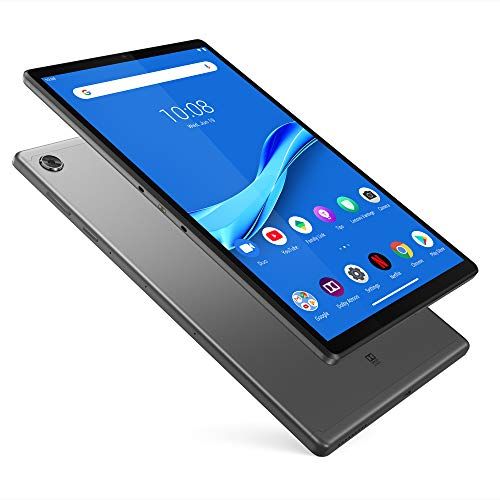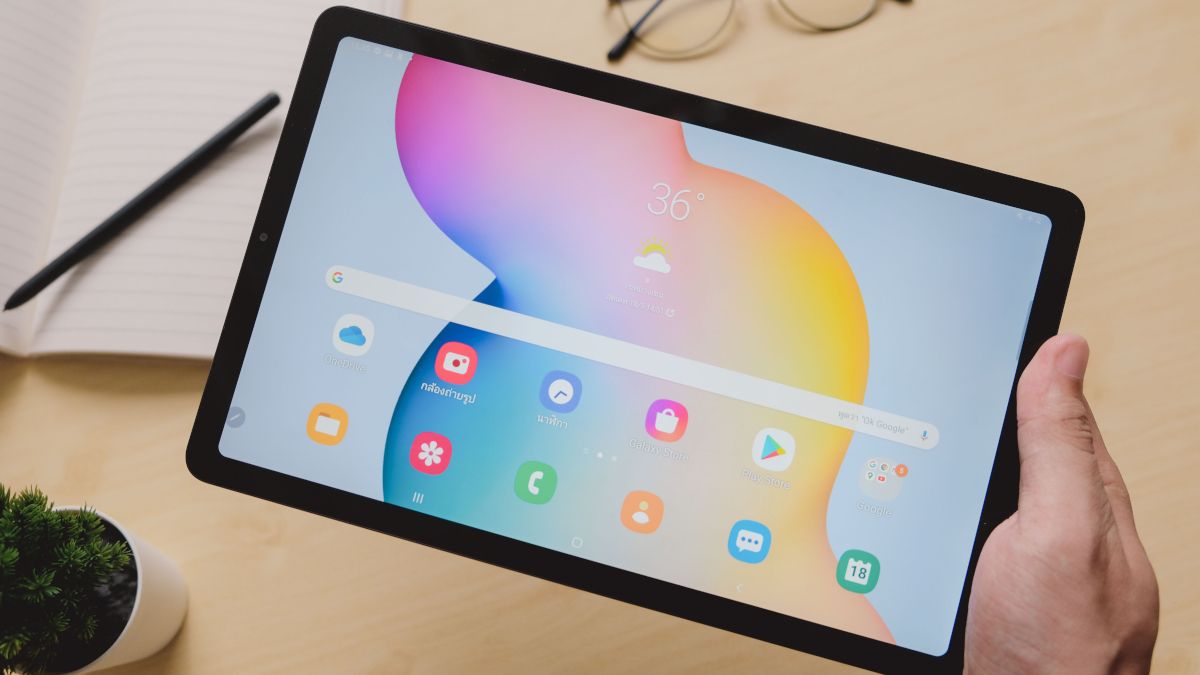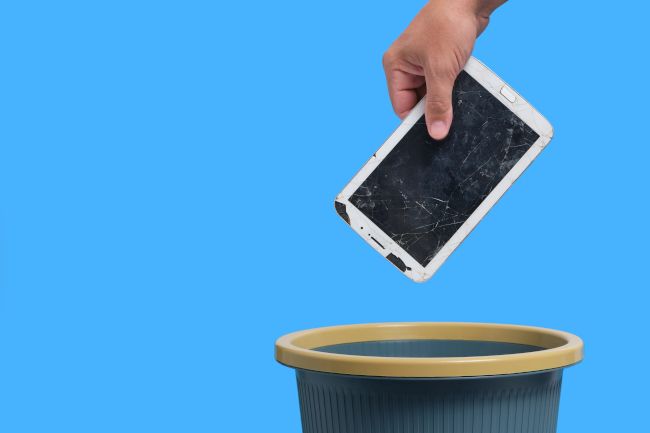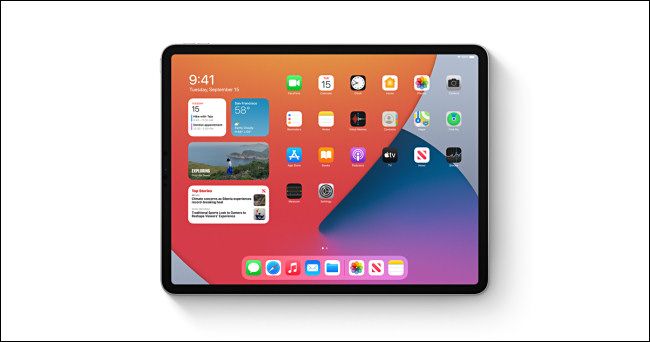Quick Links
There's little argument that iPads are the market leader, but the Android tablet gap is closing and, in some ways, Android tablets are outdoing the competition. Let's look at how the best Android tablets have to offer you stacks up.
Performance
It's no secret that Apple Silicon (all of it, not just the M1-derived chips) are significantly faster than anything in an Android tablet. At least if we're comparing each iPad to its nearest price competitor. Apple simply has bigger, faster, and more ambitious CPU and GPU technology in their tablets. This is at least partly due to Apple's total control of its hardware production. They might take a loss on some components, but since they make a profit on the unit as a whole it doesn't matter. When a company like Qualcomm sells a system-on-a-chip to a phone manufacturer, they need to make a profit on each one.
Not just that, but these chips are sold for general use in many different devices; they aren't specifically created to work in a specific device. That leads to cost-cutting measures that Apple doesn't have to worry about, such as keeping the size of their processors small. This concept is brilliantly explained by Android Authority's Gary Sims in a 2017 video that's well worth watching.
Simply put, Apple sells desktop-class processing and graphical power in a tablet form factor. The latest iPad Pros have the same M1 processor as the MacBook Air and MacBook Pro 13. Even before the M1, iPad Processors have smashed Android competitors in benchmarks.
That's not the whole story, though. While iPads are the on-paper kings, in real life having that much processing power on tap might not make any difference to most users. Even lower-end modern Android tablets offer more than enough power to do everything typical users might need, such as watching videos, reading ebooks, and browsing the web. Unless you're doing intensive tasks like video editing, music production, or 3D video gaming, there's not much functional performance difference.
Gaming
Mobile gaming is a huge deal these days and you'll find plenty of competent gaming Android phones. However, in the world of Android tablets, even at the high end, it doesn't seem that GPU power is much of a priority.
Raw power isn't the only factor that makes Android tablets less appealing for gamers. Apple has put years of effort into iOS gaming. They've enforced a unified controller support standard, they've developed their own high-performance graphics API, and offer a more appealing ecosystem for game developers who produce premium games.
Overall, you should look elsewhere if gaming is an important reason for you to buy a tablet. However, there will always be a few casual games that will run well on any Android tablet and we can't forget that cloud gaming is on the rise. This means you can use your Android tablet to remotely access powerful gaming hardware, as long as you have an adequate internet connection.
Form Factors
Apple's iPads don't come in that many varieties. There's the 8.3 inch iPad Mini, 10.2 inch iPad, and the 11 and 12.9 inch iPad Pros. It's not just about size options either. With the exception of the 11-inch iPad Pro, all current iPads have a 4:3 aspect ratio.
Android tablets come in a variety of screen sizes and aspect ratios. There's are many different configurations and designs to choose from. Apple iPads have a fantastic form factor, but they won't suit every user and every use case. For many people, the tablet with the perfect size, shape, and weight is going to be found on the Android side of the fence.
Hardware Quality
iPads have a strong reputation for top-tier build quality. Apple uses strong materials to create tablets that are rigid and tough. They feel premium and hold up well to typical daily abuse. In short, iPads are about as close to "bulletproof" as you're likely to get in the world of mainstream consumer tablets and that counts for what's inside them as much as their exterior appearance and finish.
Android tablets vary wildly in quality. From incredibly cheap no-name tablets that are like to be dead on arrival, to exquisite high-end devices from manufacturers like Lenovo and Samsung, there's an Android tablet at every level of quality on offer.
This is both a strength and a weakness for Android tablets since it means you can choose what you're willing to sacrifice for a given tablet budget. At the same time, it also means the burden on you is heavier when it comes to making sure you don't buy something that will fail just when you can least afford it.
Value for Money
iPads have a reputation for being expensive and in absolute terms that may be true. However, they offer a different value proposition than Android tablets do.
Just as with Android phones, Android tablets generally don't receive operating system updates for very long. Even premium Android brands tend to cut off software updates after around two years. Of course, this is up to the tablet maker to decide, so you may find specific Android tablets models that come with a pledge to provide updates for longer.
Apple, on the other hand, has had a reputation for supporting its devices for many years. iPadOS 15, the latest version at the time of writing, will work on an iPad Air 2. A tablet that was released in 2014! Combine this with the fact that iPads tend to be ahead of the curve in terms of processing power at launch, you can probably hold on to your new iPad for many years without any real need to replace it. In other words, while an iPad may be more expensive upfront, it might actually be less expensive if you consider its useful lifespan.
Operating Systems
Apple's iPadOS is the tablet-specific branch of the iOS family. It's gone through multiple iterations over the years, punctuated with major leaps such as the addition of split-screen multitasking with the iPad Air 2. There's only one consistent iPadOS experience and only a limited number of iPad models. This makes it easy for both Apple and developers to optimize apps and interfaces for iPads. For that reason, iPadOS might be the best tablet operating overall, and in the latest iteration with its refined multitasking features, that's truer than ever.
Android on tablets is as much a mixed bag as it is on phones. While there is a "stock" version of Android and you can buy devices that use stock or near-stock implementations of Android, most use custom interfaces. Each tablet maker develops a skin for Android, with its own special features, which can be great or frustrating on an individual basis. Since there are so many hardware combinations in tablets that run Android, it's difficult for developers to achieve the same level of optimization in apps as they can on iPadOS. So overall the Android tablet experience can feel less polished, consistent, and performant than iPadOS.
That being said, Samsung's custom UI has advanced in leaps and bounds on their tablets, and tablets like the Lenovo M10 Plus do a great job of walking the line between stock Android and a custom experience.

Lenovo Tab M10 Plus
As long as you have no interest in 3D mobile gaming, the M10 Plus is staggering value for money thanks to a premium screen and body, along with a respectable CPU, and almost-stock Android experience.
The Bottom Line: How Good Are Android Tablets?
Now that we've gone over the comparative strengths of each platform, let's distill that down into specific conclusions.
- If you want a long-term tablet, go with an iPad.
- If you care about build quality at the high-end, either premium Android tablets or iPads are good.
- If you care about build quality at the budget-end of the market, get an entry-level iPad.
- If you only do basic productivity, web browsing, and media consumption, Android tablets are good enough, depending on the specifications.
- If you want to play games, get an iPad. Any iPad.
- If you want to do heavy tasks such as video editing or music production, iPads are the way to go.
- If you want full control over your tablet and the ability to load any apps, get an Android tablet.
Android tablets are definitely viable tablet options and at the very low budget end of the tablet market, perhaps even the only option. Apple's entry-level iPads don't leave much room at the low midrange of the market. You should also be mindful of the ecosystem you're currently in. If you're using a Samsung Android phone, a Samsung Android tablet will allow for more inter-operation. The same goes for current MacBook or iPhone users when it comes to iPads. Android tablets are good, as long as they match your specific situation.



